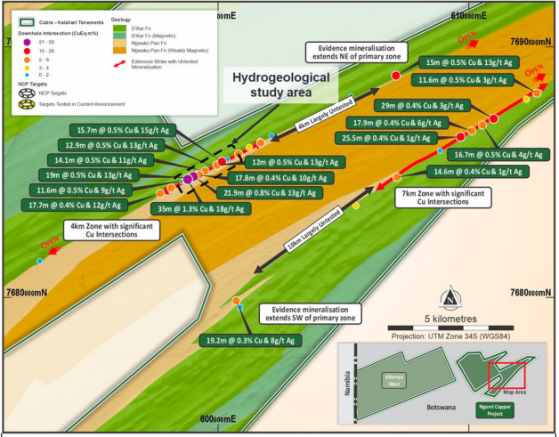Cobre Ltd (ASX:CBE) has kicked off a 3D hydrogeological test study to prove the viability of developing an in-situ copper mine at its Ngami Copper Project (NCP) in Botswana’s Kalahari Copper Belt (KCB).
To do that, the company has begun drilling two pumping and injection wells to gain insights into aquifer permeability, anisotropy, extent and groundwater flow directions in areas with high- and moderate-grade zones of mineralisation in the southern anticlinal structure of the NCP.
Cobre is aiming to prove up a similar in-situ copper recovery (ISCR) process to Taseko Mines (NYSE:TGB)' Florence Copper Deposit in Arizona, which boasts 320 million tonnes at 0.36% copper and shares a similar scale to NCP.
READ: Cobre welcomes potential for extensive in-situ copper mining at Ngami
The test work will be undertaken in two phases:
- Phase 1 - Short-term single well pumping and injection test providing insight into the injection feasibility prior to the start of the more comprehensive follow-on stage; and
- Phase 2 - long-term two well pumping and injection test designed to evaluate the aquifer characteristics at two locations over a longer period.
Both phases of work are expected to be completed in the next quarter.
WSP Australia Ltd has been engaged to provide oversight and modelling of the pumping-injection test results.
Map showing the position of the test study on the southern anticline of the NCP.
Critical work
“We’re excited to get this important phase of work started,” Cobre chief executive officer Adam Wooldridge said.
“Results from the program will provide a critical stage gate for our ISCR journey on this project.
“If proven successful, applying ISCR to extract the copper and silver mineralisation will present an ideal, low capex, low opex and environmentally-friendly method for producing copper cathode on-site.”
Read more on Proactive Investors AU
